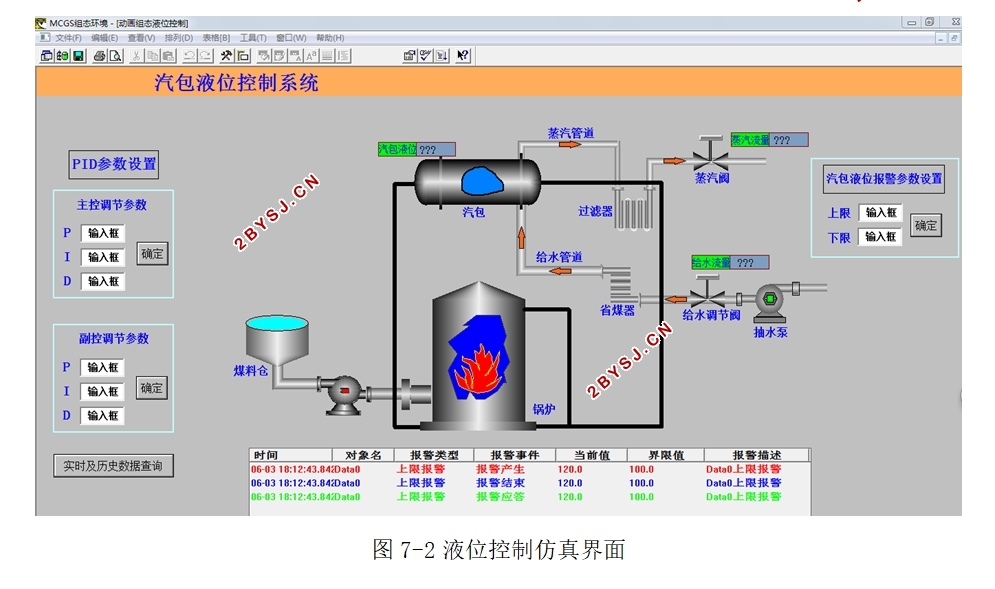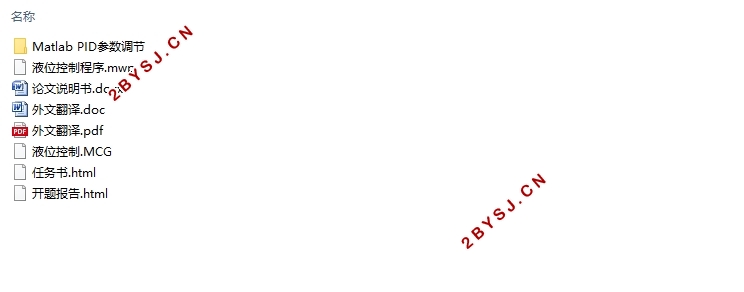基于PLC锅炉汽包液位三冲量PID控制(S7-200梯形图程序,MCGS组态)
无需注册登录,支付后按照提示操作即可获取该资料.
基于PLC锅炉汽包液位三冲量PID控制(S7-200梯形图程序,MCGS组态)(任务书,开题报告,外文翻译,论文说明书13000字,MCGS组态,S7-200梯形图程序)
摘要
锅炉汽包水位控制系统是保证锅炉正常运行的关键因素之一。若水位过高,影响汽水分离的效果,导致设备发生故障;而水位过低则会破坏汽水循环,严重时导致锅炉爆炸,所以锅炉汽包水位必须严加控制。当今,PLC技术的快速发展,使得PLC广泛的运用在了过程控制领域,使得控制精度大大提高,它已经成为了控制领域不可缺少的设备之一。
本文将描述锅炉汽包水位控制的三冲量控制方案,它是通过分析影响汽包液位的各种因素,重点放在如何避免“假水位现象”。首先按照工程整定的方法对PID参数进行整定和仿真,再通过所设计的控制方案进行硬件的选型和设计和西门子S7-200编程来实现控制算法对锅炉的汽包控制,最后通过MCGS组态实现仿真。
关键词:PID控制 汽包液位 三冲量控制 PLC
Boiler Water Level PID Control of Three impulse
Abstract
A important factor that Boiler drum level control system is ensure the normal operation of the boiler. If the water level is too high, the impact separator effect, cause the device to malfunction; while the water level is too low would undermine soda circulation, leading to serious boiler explosion, the boiler feed water must be strictly controlled. Today, the rapid development of PLC technology, the PLC widely used in the field of process control, making the control accuracy is greatly improved, it has become one of the indispensable device control areas.
This article will describe three boiler drum level control impulse control scheme, it is through the analysis of various factors affecting the drum level, with emphasis on how to avoid "false water level phenomenon." First, in accordance with the method works tuning PID parameters tuning and simulation, and then the selection and design of hardware and Siemens S7-200 programmable via the control scheme is designed to achieve the control algorithm to control the boiler drum, and finally through MCGS configuration achieve simulation.
Keywords: PID control Drum level three impulse control PLC




目录
摘要 I
Abstract II
目录 III
第一章 绪论 1
第二章 控制方案分析与设计 2
2.1设计的主要工作: 2
2.2液位特征与控制方案分析: 2
2.2.1汽包液位动态特性: 3
2.3汽包液位控制方案设计 6
2.3.1单冲量控制系统 6
2.3.2双冲量控制系统 7
2.3.3三冲量控制系统 8
3.1液位传感器选型: 10
3.2流量传感器的选型 10
3.3电机的选型 12
3.4变频器选型 13
3.5接触器的选型 13
3.6功率三极管的选型 14
3.7熔断器的选型 14
3.8PLC的选型 14
第四章 硬件工作方式、原理与整体设计 15
4.1变频器的组成 15
4.2变频器的工作方式: 15
4.3变频器的工作原理: 15
4.4PLC基本组成结构 16
4.5PLC分类: 16
4.6PLC结构: 17
4.7PLC工作方式: 17
4.8整体线路设计 18
第五章 控制算法及参数整定 20
5.1PID算法介绍 20
5.2三冲量控制系统参数整定 21
第六章 PLC程序设计 28
6.1程序流程: 28
6.2梯形图设计: 29
第七章 监视与控制通用系统设计 34
7.1MCGS构成: 34
7.2MCGS组态实现步骤: 34
7.3MCGS监控组态软件的设计 35
7.3.2实时数据 37
7.3.3运行策略 38
7.7.4设备窗口 41
7.4MCGS监控界面运行 42
第八章 结束语 43
参考文献 44
致谢 46
